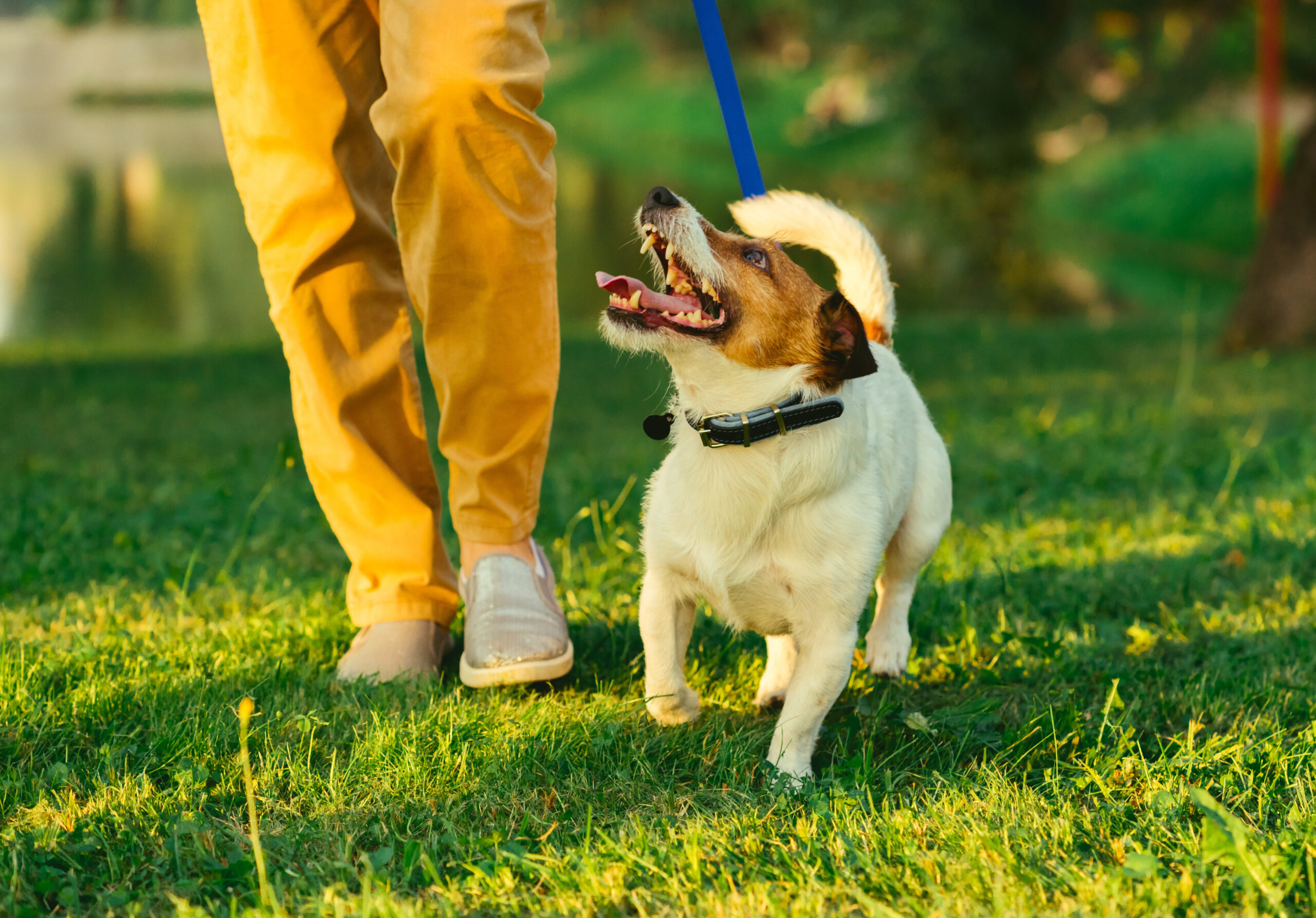
Dogs love to lead during walks. Even when leashed, your dog will often take the forward position with you controlling the distance that your dog is allowed to walk. As a responsible owner, you are responsible for your dog at all times, and part of that responsibility is making your dog heel, or walk next to you as opposed to in front of you, when necessary.
The “heel” command is great for keeping your dog close to you as they fight their instinct to engage with distractions. Times to use “heel” include walking past a barking dog or down a busy street with a lot of traffic.
Teaching the “Heel” Command
- Be prepared. Start with your dog on a leash at your side. Have treats ready in your hand closest to your dog. Hold the leash in your other hand. (For example, if your dog is on your left side, hold the leash with your right hand and treats in your left.)
- Walk around and give your dog a treat every few steps. Make sure that your dog is not jumping around when he gets a treat. You want to reward for controlled and calm behavior.
- Practice stopping. Occasionally stop walking. When you stop, raise your hand to get your dog to sit. Reward and praise your dog for correctly following directions.
Advanced Heeling
When your dog is ready, you may start practicing without a leash and without consistent treating.
- During training, be prepared with treats in your pocket as a reward for correctly heeling. Gradually reduce the frequency of treating compared to when your dog was first learning the command.
- Practice off-the-leash heeling in low-distraction areas, such as a backyard. You want your dog’s undivided attention focused on you during training and crowded environments, such as dog parks or high traffic areas, may present difficulties.
- Gradually your dog will become more obedient and demonstrate an understanding of what it means to heel. Allow your dog to wander further away from you during walks. Dogs naturally love to explore, and this curiosity should be encouraged as long as you can regain your dog’s attention when necessary.
Conclusion
As a word of caution, only use “heel” for mitigating distractions and impulses. A dog who has mastered the command is responsive and subordinate – they respect the command and follow orders upon hearing it. Overusing the command may decrease your dog’s sensitivity to the word.
Once you are confident in your dog’s ability to heel on-command, you may take your dog out for walks with significantly less stress. Remember that ‘heeling’ fights against a dog’s impulses, so practice patience during training. Good luck!





